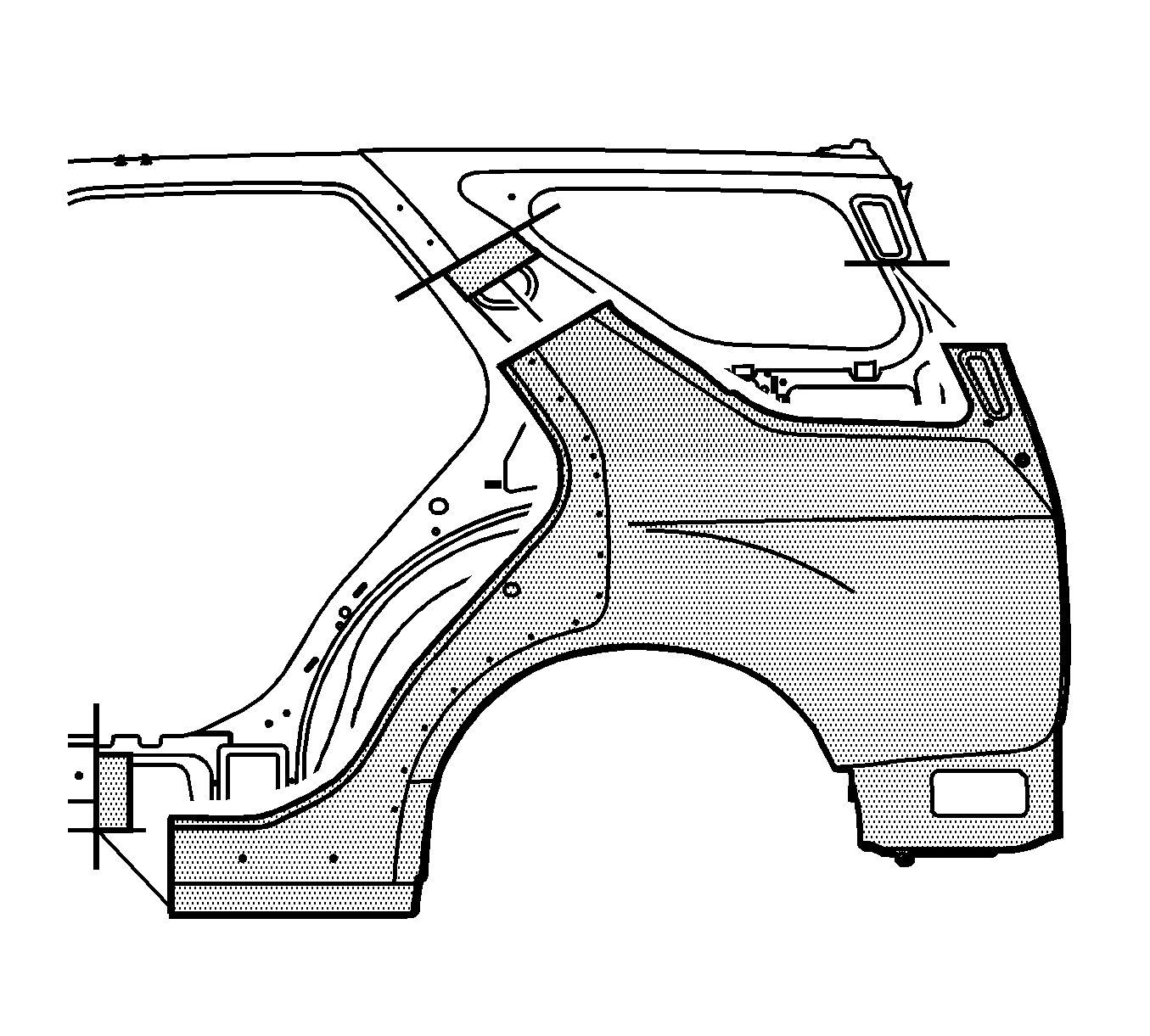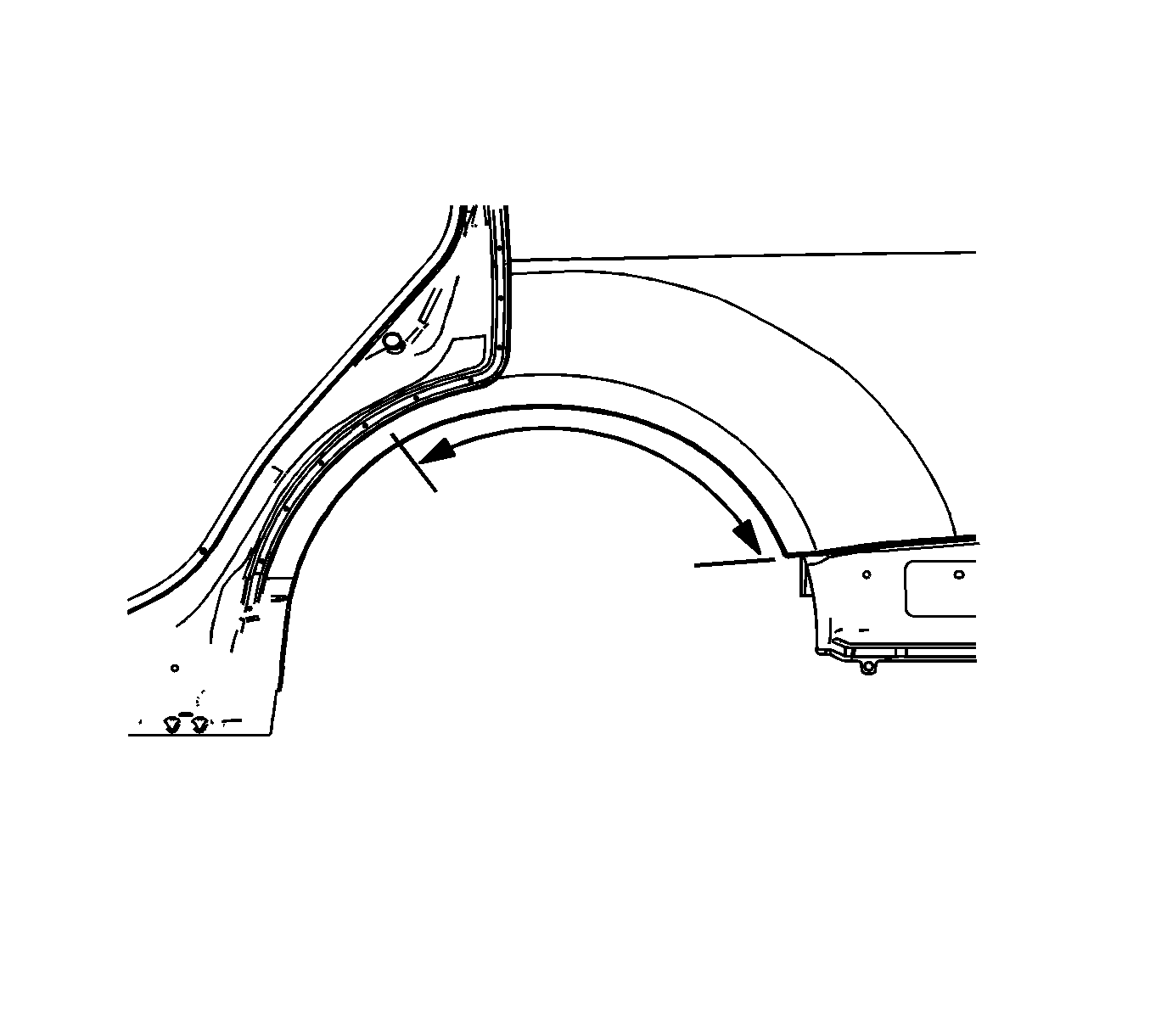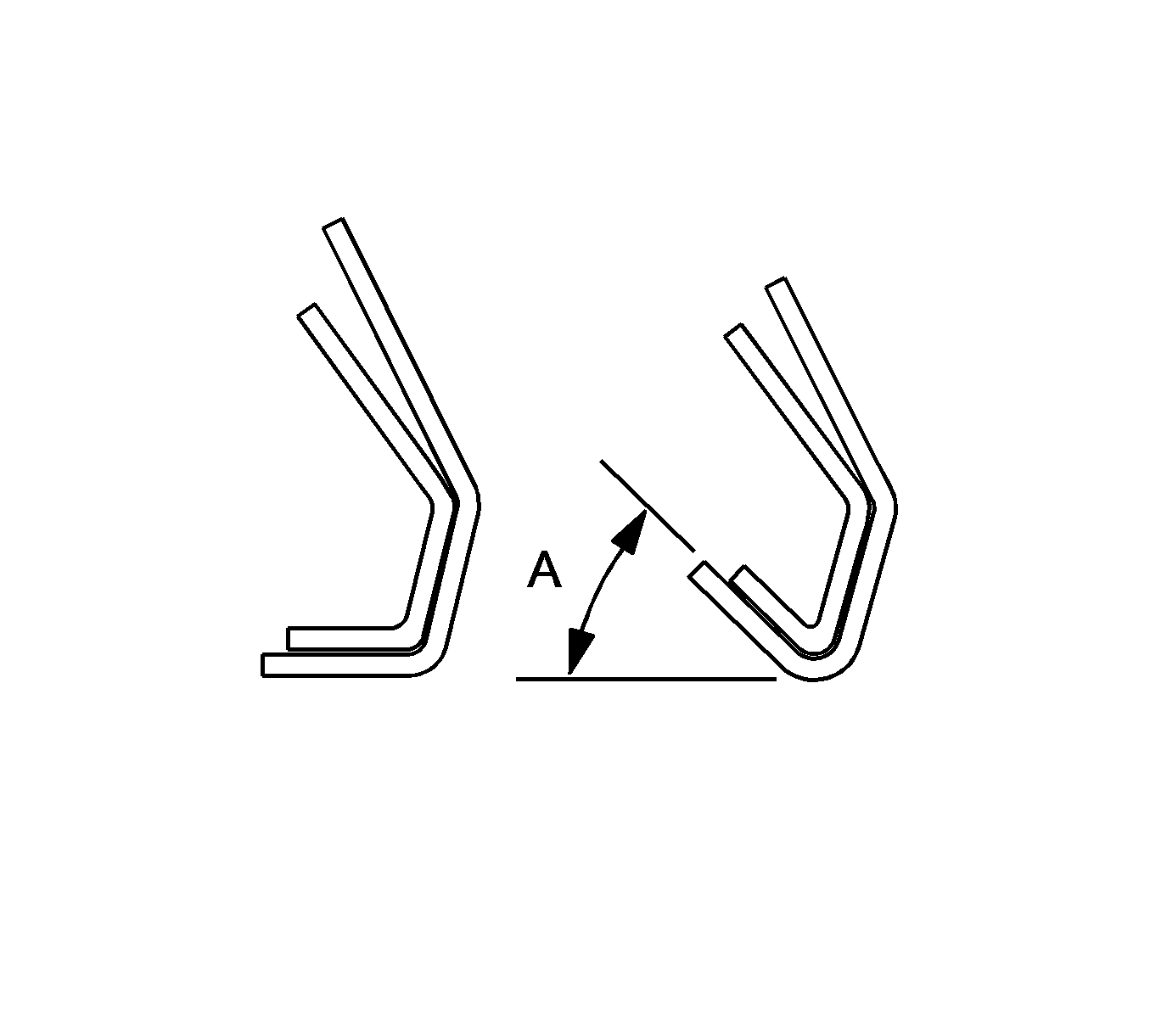Removal Procedure
Caution: Refer to Approved Equipment for Collision Repair Caution in the Preface section.
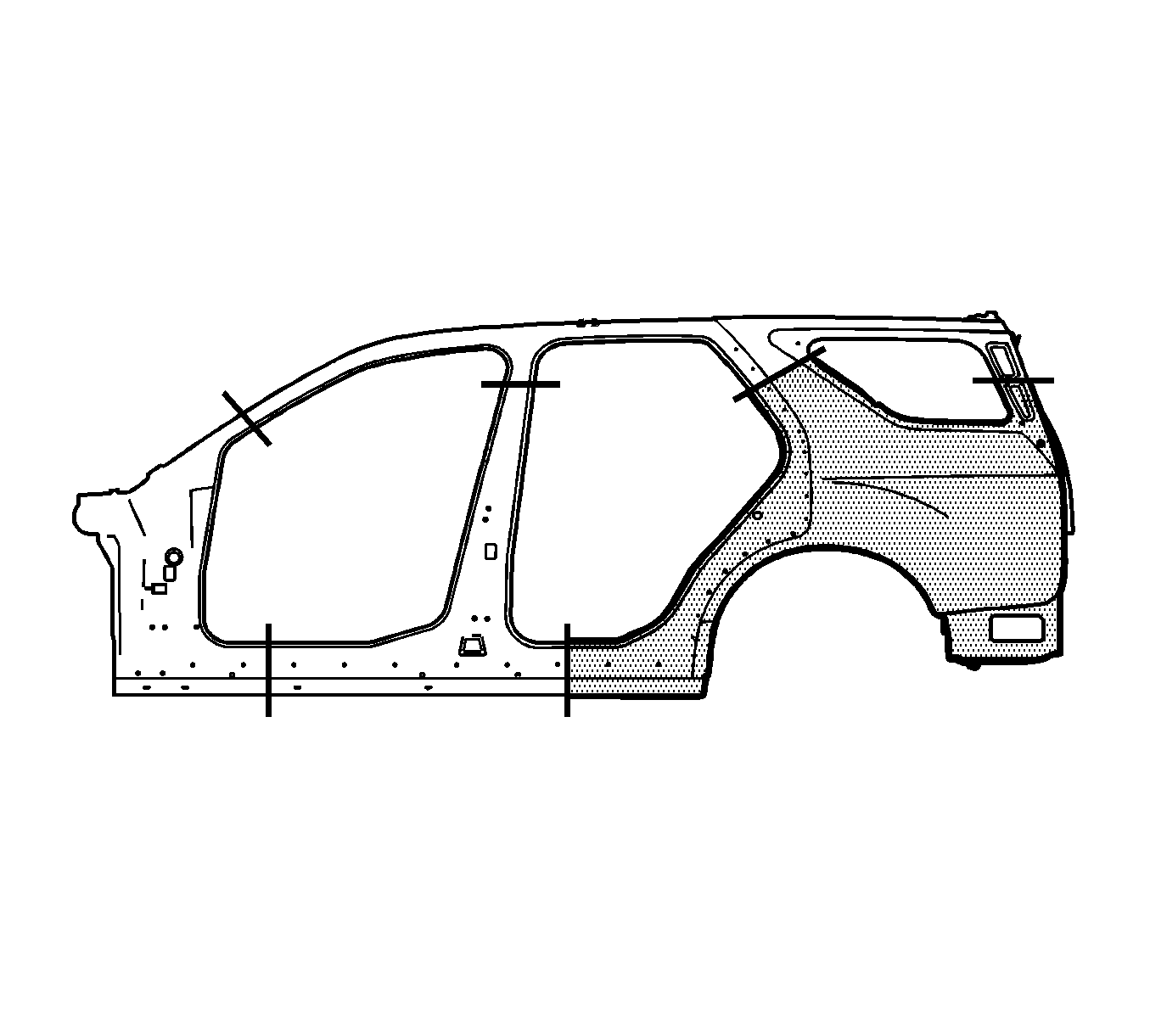
The full body-side outer panel comes as a complete assembly and can be replaced at factory seams after the removal of the fixed glass and roof. Any one of these service procedures can be performed separately or in any combination, dependent upon the extent of damage to the vehicle. Sectioning must take place in specified areas only.
- Disable the SIR system. Refer to SIR Disabling and Enabling .
- Disconnect the negative battery cable. Refer to Battery Negative Cable Disconnection and Connection .
- Remove all related panels and components.
- Repair as much of the damage as possible.
- Remove sound deadeners as necessary and note their location.
- Remove the sealers and anti-corrosion materials from the repair area, as necessary. Refer to Anti-Corrosion Treatment and Repair .
- Create cut lines on the rocker panel within the approved sectioning locations.
- In the quarter-glass opening, cut as shown.
- Mark a cut line to the door opening.
- Cut the panel where sectioning is to be performed.
- Locate, mark, and drill out all the necessary factory welds.
- Remove the damaged quarter panel.


Important: Do not damage any inner panels or reinforcements.
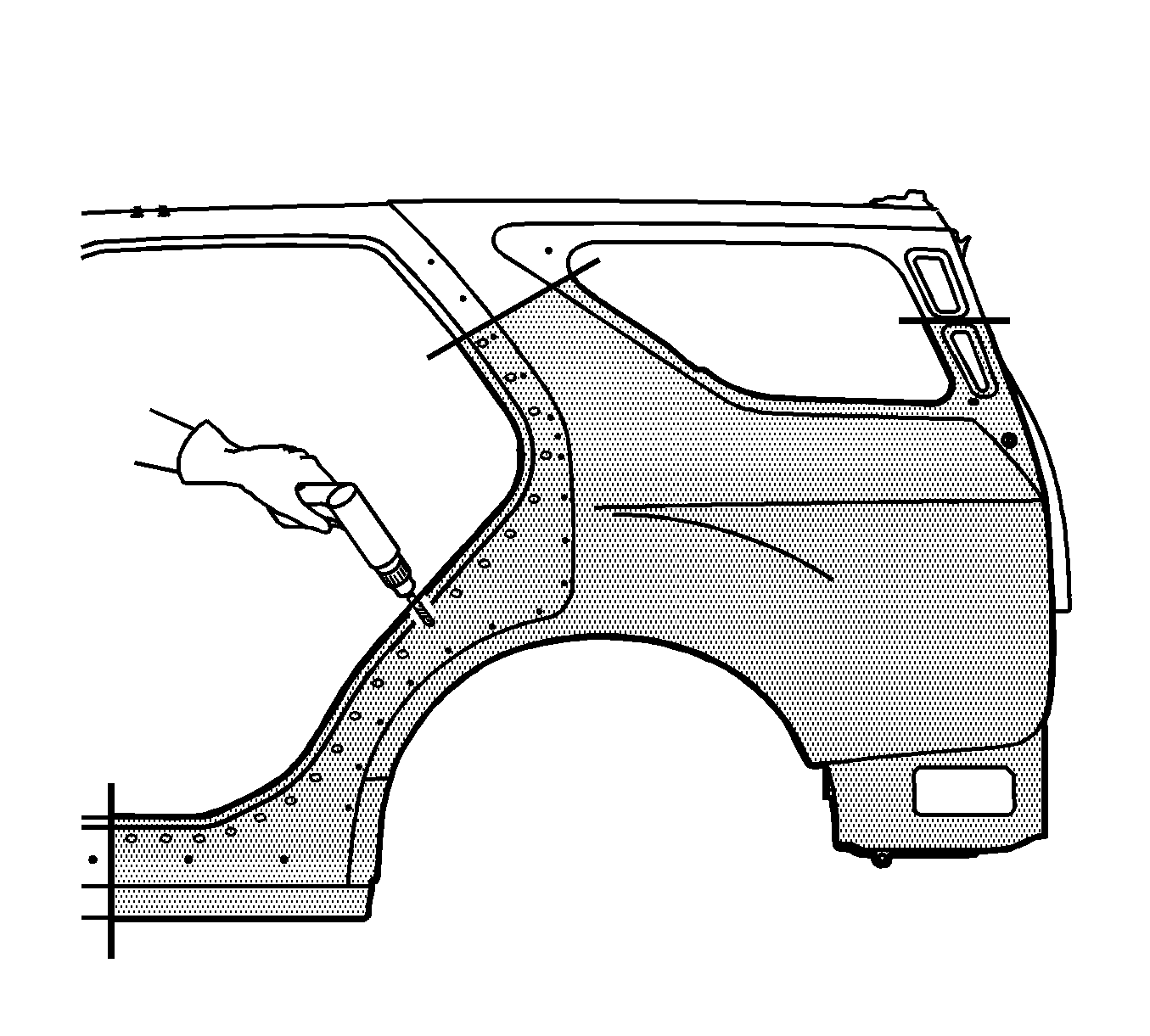
Important: Note the number and location of the factory welds for installation of the quarter panel.
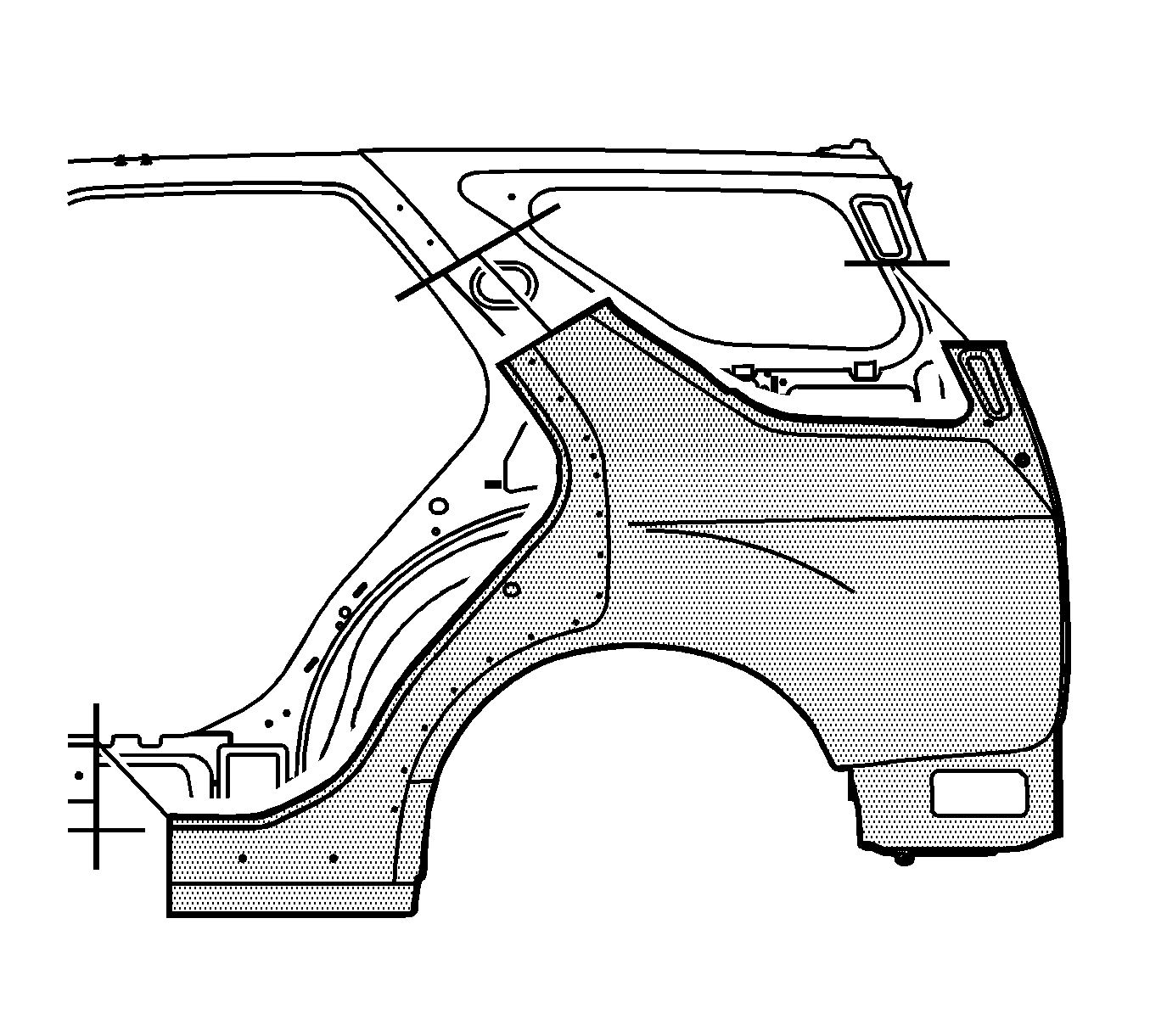
Installation Procedure
- Cut the body side assembly in corresponding locations to fit the remaining original panel. The sectioning joint should be trimmed to allow a gap of one-and-one-half-times the metal thickness at the sectioning joint.
- Create a 50 mm (2 in) backing plate from the unused portion of the service part for the back glass area. Create a 100 mm (4 in) backing plate from the unused portion of the service part for the rocker area. Trim the backing plates as necessary to fit behind the sectioning joints.
- Drill 8 mm (5/16 in) along the sectioning cut on the remaining original part. Locate these holes 13 mm (½ in) from the edge of part and spaced 40 mm (1½ in) apart.
- Drill 8 mm (5/16 in) plug weld holes in the service part as necessary in the locations noted from the original panel and along the sectioning cut.
- Prepare all mating surfaces, as necessary.
- Apply 3M Weld-Thru Coating P/N 05913 or equivalent to all mating surfaces.
- Fit the backing plates halfway into the sectioning joints, clamp in place and plug weld to the vehicle.
- Align quarter panel using 3-dimensional measuring equipment.
- Plug weld accordingly.
- To create a solid weld with minimum heat distortion, make 25 mm (1 in) stitch welds along the seam with 25 mm (1 in) gaps between them. Then go back and complete the stitch weld.
- On vehicles equipped with 18 in wheels, locate the wheel opening flange between the 10 o'clock and 2 o'clock positions.
- On vehicles equipped with 18 in wheels, hand form the wheel opening flange to 62 degrees from 90 degrees for proper tire clearance. This is a 28 degree change.
- Clean and prepare all of the welded surfaces.
- Apply sound deadening materials as necessary.
- Paint the repaired area. Refer to Basecoat/Clearcoat Paint Systems .
- Install the rear window. Refer to Quarter Window Replacement .
- Apply the sealers and anti-corrosion materials to the repair area, as necessary. Refer to Anti-Corrosion Treatment and Repair .
- Connect the negative battery cable. Refer to Battery Negative Cable Disconnection and Connection .
- Enable the SIR system. Refer to SIR Disabling and Enabling .
Important: This part has structural weld-thru adhesive in the joint areas. Replace this part with additional spot welds at the attachment points. This can be accomplished by adding an additional weld between each factory weld in all areas.


Important: If the location of the original plug weld holes can not be determined, place plug weld holes 40 mm (1½ in) apart.
